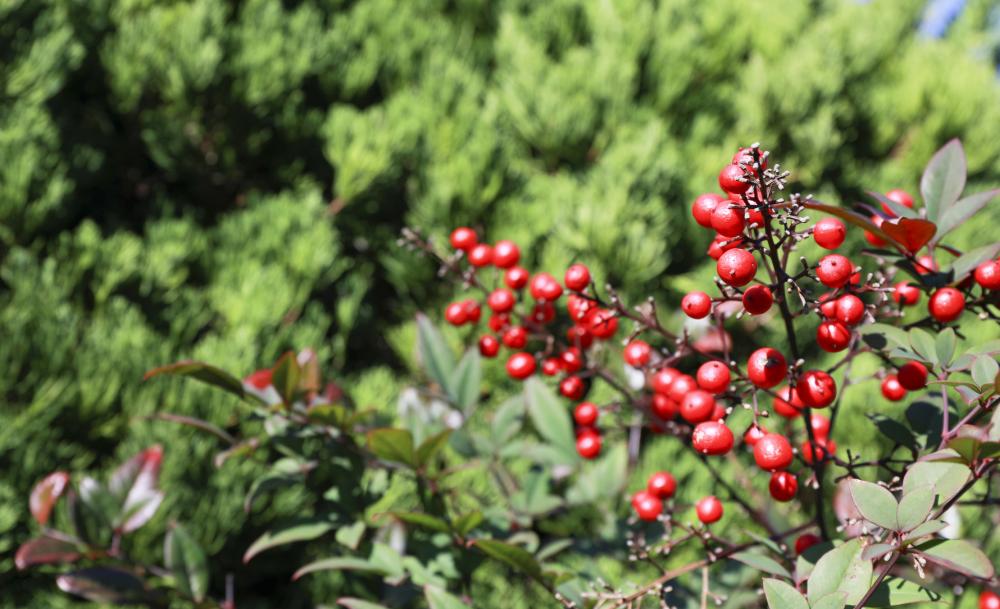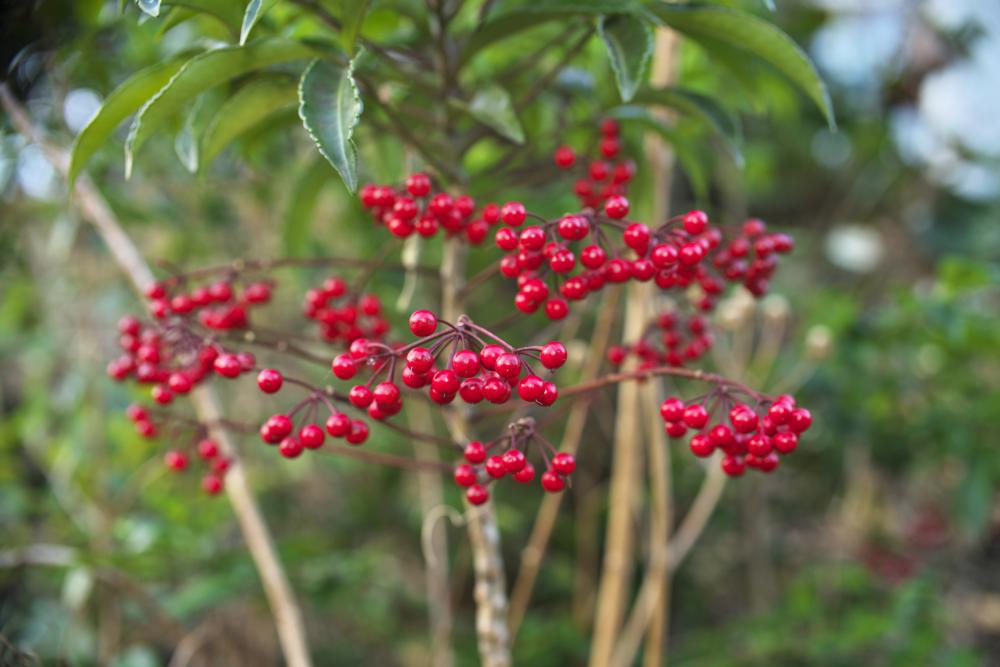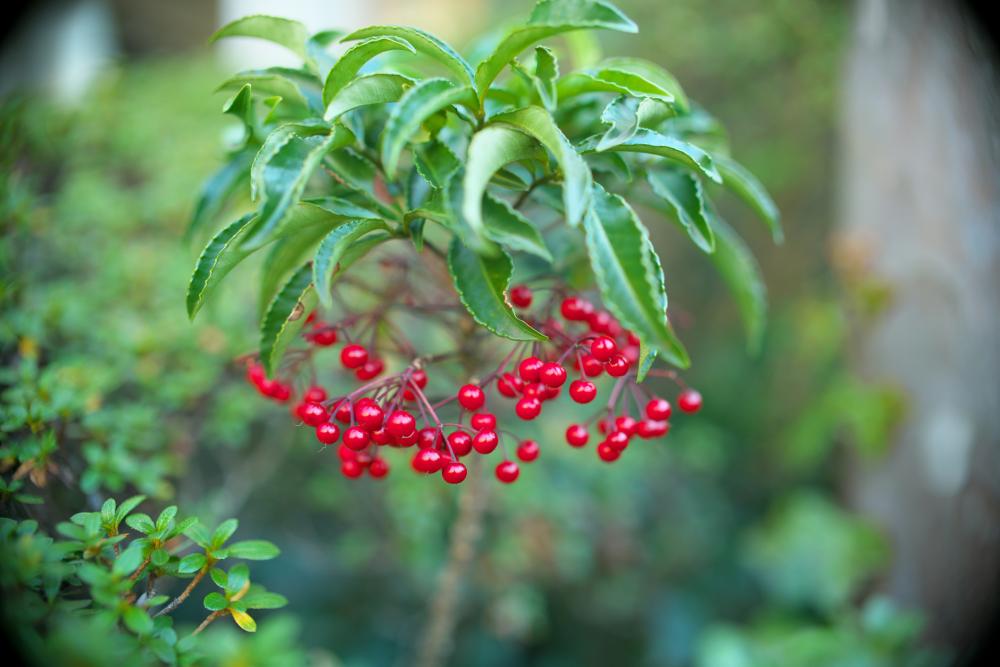Japanese Ardisia - How To Grow And Care For Marlberry Shrubs
The Japanese Ardisia is the kind of shrub that stays meaty throughout its life. With lush dark-green leaves, pink flowers, and cherry-like fruits, its ornamental values make information technology hard to miss. And being an evergreen plant is just the icing on the cake.

The shrub grows well in sheltered places since its root arrangement is not stiff enough to withstand strong winds. Only other than that, the Japanese Ardisia is a cocky-sufficient plant that needs little intendance and is not fussy about the growing weather condition.
Read more to find out how to abound and care for this evergreen shrub and how to protect it from the various growing bug you might encounter.
All Virtually Japanese Ardisia
Whether you telephone call it Japanese Ardisia or marlberry, this low-growing shrub is a delightful groundcover. It used to have some more imaginative names such as Bladhia, Bladhia japonica, and Ardisia odontophyllum. But with a short stature that doesn't exceed 12 inches, the shrub is happy to encompass whatever drab corner in your garden and transform the landscape dramatically.
Not many groundcovers produce flowers and fruits. For the most function, they're happy to add a splash of greenish on the ground. Just the marlberry ups the ante with its pinkish flowers and red berries. The leaves are modest and oval-shaped. The nighttime green leaves normally grow at the tiptop of the brusque branches, and the dense foliage literally glitters in the sun.
Native to Nippon, Korea, and Taiwan, information technology grows best in zones eight and nine. Its original habitat is usually partially shaded equally it grows in the shadow of bamboo forests. The shrub, however, self-seeds, and so you'll need to either deadhead the flowers or pluck the berries earlier they ripen to prevent the spread of the shrub.
Besides its lush foliage, the shrub offers modest star-shaped flowers to complement the dark-green groundcover. The flowers open in July and stay in bloom throughout August. Later on they pollinate, small cherry-similar fruits appear. They turn brilliant red between October and Nov and might stay on the shrub throughout winter. The fruits are packed with seeds that look the next leap to spread on the ground and start new plants.
Japanese Ardisia Uses

Growing in Japan, Korea, and the eastern regions of China, the Japanese Ardisia quickly became part of many rituals, cultural events, and, of class, medicine. The evergreen shrub serves many decorative purposes, and the red berries accept medicinal properties. Hither are some of the historical uses of marlberry that persist even today.
- The marlberry is a fixture of Japanese New year's day celebrations.
- Some cultivars with variegated leaves are grown for their ornamental values.
- Grow the marlberry as a groundcover in partial shade or dim-lit parts of the garden or backyard where turfgrass doesn't grow. Still, it has a low tolerance for foot traffic.
- In Chinese traditional medicine, the shrub is considered ane of the 50 fundamental herbs where it goes in just about any batter and prescription from scabs and acne to gout and digestive problems and consumption.
- Don't take the Japanese Ardisia as a cocky-prescribed medicine. If consumed in large doses, information technology tin can cause kidney damage.
Japanese Ardisia Varieties
Due to its versatility and ornamental properties, Japanese Ardisia has become a popular garden fixture. New cultivars were developed to meet the market needs for variety and different colors. These cultivars mainly offering variegated foliage and long-lasting blooms. Hither are some of those cultivars.
- Ito-Fukurin: A cultivar grown specifically for Japanese and Korean gardens. The leaves are gray-green with white thin lines around the edges. The flowers are mostly white.
- Nishiki: Some other cultivar with variegated leaf. However, the leaves here are a combination of cream and pink. When the leaves mature, they plough creamy yellowish.
- Chirimen: A hardy cultivar with splendid tolerance for common cold weather. The leaves are green, but you tin abound them in zones 6 to 9 without any problems.
- White Cap: This cultivar is like to Ito-Fukurin. It has grayness-green foliage with thick white lines outlining each foliage. It has a low tolerance for bright light and cold atmospheric condition, so you tin can grow it if you live in zones eight and 9.
How to Abound Japanese Ardisia

Although Japanese Ardisia starts hands and quickly from seeds, this is not the recommended style to grow information technology. Since the shrub is not native to the US, at that place's no guarantee that the seeds you'll order online will grow in your zone. So for the best results and for convenience, you should become saplings from the local nursery. Here's how to get-go marlberry in your garden in easy steps.
- Choose a spot in your garden that doesn't get a lot of pes traffic.
- Plough upwards the top ten inches of the soil and mix in organic materials at a ratio of i:1.
- Dig a hole twice the width of the root ball of the shrub and line it with aged manure or organic compost.
- Ease the shrub out of the container it came in and examine the roots. Trim off whatever damaged or entangled roots and ruffle them with your hand.
- Place the shrub in the pigsty so that the edge of the pigsty aligns with the soil line on the stem.
- Backfill the hole with the mixture of soil and bootleg fertilizer and pack information technology firmly to push out air pockets, and make certain the shrub is standing upright.
- Water the shrub immediately to become the soil moist and help it settle.
- Encompass the ground around the parameters of the shrub with a thick layer of mulch to prevent weeds from competing with the immature shrub. Continue the mulch on the ground until the marlberry establishes in the soil.
- If the shrub you bought is large, you might need to build a well around the drop line of the shrub. This will keep the soil moist during the hot summer months.
Japanese Ardisia Intendance
The 3 main tasks that yous need to pay attention to when caring for the Japanese Ardisia are watering, light, and pruning. You still demand to feed it and ward off some pests and treat a few diseases. But if you get those three right, your marlberry shrubs will non give you much trouble. And, of class, you shouldn't footstep on them or treat the shrubs similar turfgrass. They're sensitive to pes traffic.
Soil
As an evergreen perennial, your soil choice will be 1 of the start decisions to brand right subsequently selecting the right time to starting time the groundcover. That's considering the Japanese Ardisia grows in the garden, which limits your ability to amend the soil or even modify it once the found is in the ground. So test your soil kickoff and brand sure information technology's more sandy and loamy than pure loamy. Heavy soil doesn't promote the growth of the root system of this delicate perennial. Improve the heavy or loamy soil with perlite or coarse sand to improve the texture and make it loose enough. Equally for the pH, it should exist slightly acidic betwixt half-dozen.0 to 6.8. Adding lime will help make the soil more acidic.
Lite
One thing is clear about the marlberry. It doesn't similar directly exposure to the sunday and is happy with either partial or full shade. As a groundcover, the plant in its natural habitat in East Asia barely gets the total dominicus. It grows in the shadow of larger and taller plants and trees with dense canopies. Then what lilliputian sunlight filters through is not harsh enough to damage the foliage of the perennial or its flowers.
That said, you should err on the side of fractional shade. Total shade can bring in its own gear up of issues, including waterlogged soil, fungal infestations, and pests hiding in the dense foliage of the plant. As long equally you protect the marlberry from the afternoon dominicus, it should exist fine.
Water
Similar most other perennials, the Japanese Ardisia requires one inch of water every week. If yous live in a dry zone, you lot'll need to provide the total one inch of water yourself. The establish's roots are too close to the surface to get wet from the deep recesses underground. But if yous become decent rainfall, then you'll demand to supplement the rest of the quota with irrigation. Your goal is always to go on the soil moist without getting it wet or allowing it to dry out. As an evergreen plant, your watering volition continue all yr round. Even so, when the temperature cools down in the fall and winter, you can cut back on watering and provide a one-half-inch a week. The soil is your guide. If the top 2 inches are nevertheless moist, you lot don't demand to water the establish just notwithstanding.
Fertilizing
The feeding habits of the Japanese Ardisia vary depending on its age. The young establish where the roots are still developing requires more phosphorus than nitrogen in its found food. Sprinkle a custom 5-10-ten fertilizer in the pigsty before you constitute the young shrub. Apply the same fertilizer once every iii weeks during the first growing season.
Once the shrub establishes, yous tin switch to a counterbalanced 10-x-10 fertilizer with enough nitrogen to promote robust leafage growth. The marlberry will still demand phosphorus for the beautiful flowers. Apply the counterbalanced fertilizer once every 3 weeks during the spring and summer. Side dress with compost and historic period manure once every four weeks during the growing flavour. Concord dorsum all types of plant food during the autumn and winter since new growths in the wintertime cannot survive in the cold winter months.
Pruning
When it comes to pruning, marlberry demands different types of pruning depending on its stage in life and the flavour. The most mutual pruning techniques y'all need to provide the shrub are shearing, thinning, pinching, and rejuvenating.
- Shearing: As the name indicates, shearing is a process in which you cut off the tiptop of the shrub to make it level. Its goal is to maintain the plant's shape and proceed it close to the ground. You tin employ pruning shears or electric shears.
- Thinning: Yous would thin out the branches of the shrub to remove disentangled or damaged branches. It also opens paths to the interior of the shrub to amend air apportionment and prevent fungal buildup. This is an ongoing process that you perform any time of the year as needed.
- Pinching: You lot will usually pinch the tips of the young marlberry plant to promote branching and encourage the plant to abound lateral branches and spread horizontally. Y'all simply need to do this during the beginning growing season of the shrub'southward life.
- Rejuvenating: When the shrub outgrows the space yous planned for it or becomes burdened with old and twisted branches, it's time to cutting back the Japanese Ardisia to its original size. Information technology'southward recommended that you don't cut back more than than one-third of the plant to avoid dissentious its structure. Yous can do this in the fall or early wintertime.
Pests and Diseases
For the about function, the Japanese Ardisia is immune to about diseases that other shrubs and evergreen plants in the garden get. As for pests, the but problems that causes the most damage to the shrub is the mealybug. You take encountered it before feeding on many plants in your garden. It looks like a tuft of cotton wool perched on the leaves and branches of the marlberry. Even if you run into only ane mealybug on the bush, you should spring to activity since more bugs are probably hiding in the dense leafage.
The best way to fight off the mealybug is to concenter ladybugs to the garden. Ladybugs feed on the mealybugs without causing harm to the marlberry. You can also spray the shrub with neem oil in one case every three weeks during the leap and summer.
Source: https://www.diys.com/japanese-ardisia-grow/
Postar um comentário for "Japanese Ardisia - How To Grow And Care For Marlberry Shrubs"